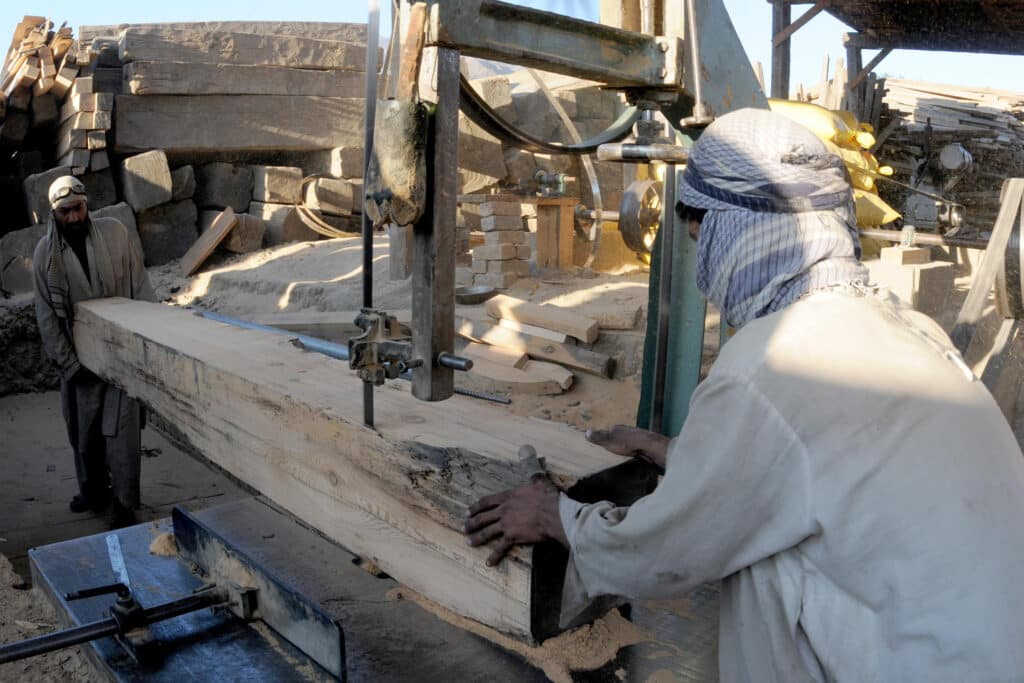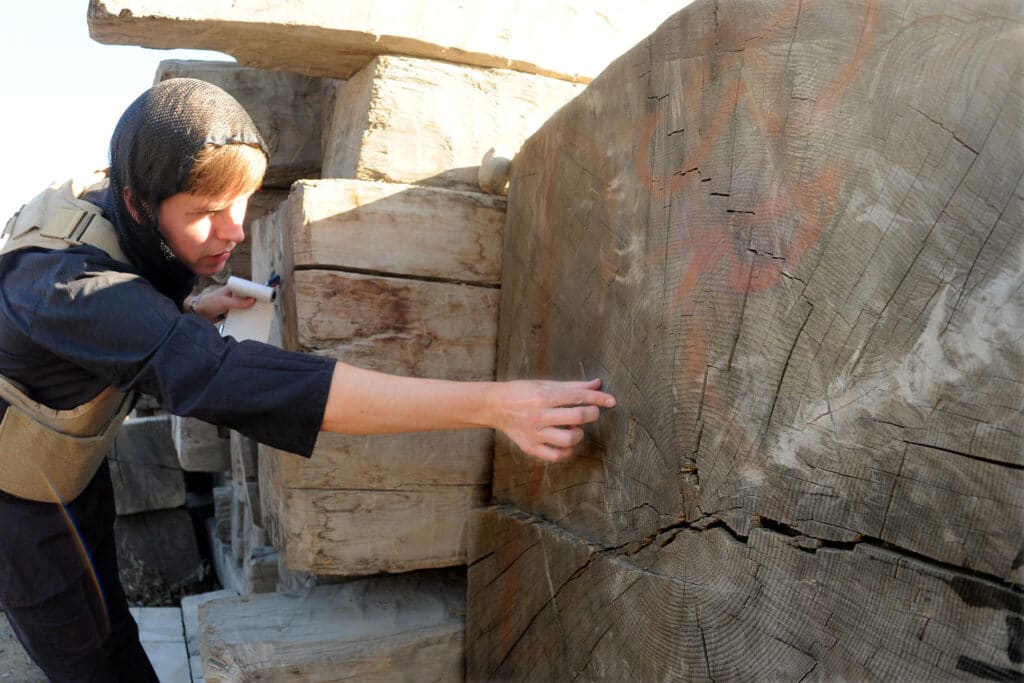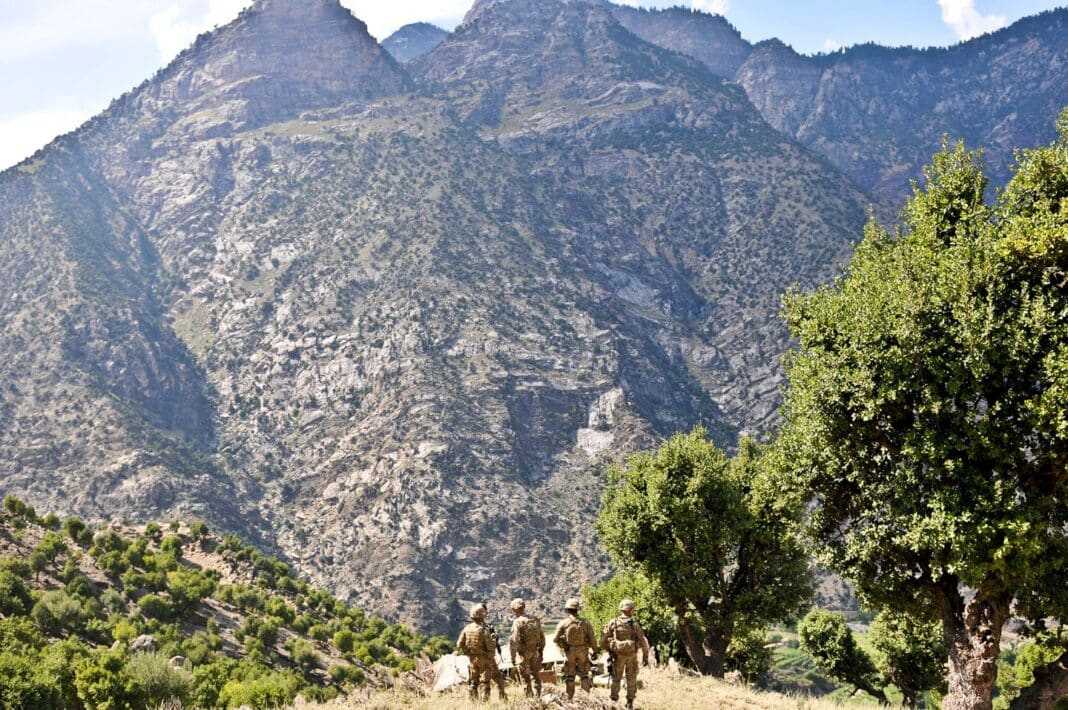The Taliban has emerged as a key player in China’s Belt and Road initiative, strengthening the country’s growing dependence on Beijing.
The move underpins a push by the Chinese government to recognise the legitimacy of the Taliban rule, with China now eyeing a US $1 trillion Afghanistan trade in commodities – including lithium reserves and the country’s vast forest resources.
Wood Central understands that timber has long been one of Afghanistan’s economic drivers, which has had numerous consequences over the years – with deforestation and pollution reportedly killing at least 3,000 people a year.
Afghanistan’s forests have also fuelled a booming trade in conflict timber for decades – with smuggled timber railway ‘sleepers’ exported from Pakistan and funding terror across the region.
And whilst the Tailban has ostensibly sought to ban timber exports through the Pakistan border, there is little evidence that the Taliban has cracked down on selling conflict timber.

According to Scientific American, the Tailban has taken “few practical steps” to address conflict timber or deforestation.
And whilst the Taliban has committed to developing a Green Unit to halting deforestation, a spokesperson for the Taliban’s Ministry of Agriculture, Irrigation and Livestock (MAIL) said the unit was only “under process.”
The difficulty for the Taliban and previous Afghan governments looking to curb conflict timber is the remoteness of the communities where the logging occurs.
“Officials simply lack the staffing or resources to physically assess, let alone catch, offenders,” Kern Hendricks, a journalist who lived in Kabul from 2017 to 2021.
Local criminal networks, funded by cash from trade, have long held immense power over local officials and would bribe or threaten anyone who moved to restrict their business.

Although unpopular with local Afghans, “timber mafias” exert substantial control over communities with no choice but to rely on the jobs and income that illegal logging offers.
Since the Taliban retook control of the besieged country in 2021, the UN now reports that 97% of Afghans live below the poverty line, with the country increasingly isolated from global markets.
Enter China and the Belt and Road Initiative
Like Afghanistan, Pakistan is a member of the Chinese government’s Belt and Road Initiative.
In recent years, trade between Pakistan and China has boomed, with Chinese media reporting that trade between the South Asian regional power and China “are at record levels.”
According to Trend Economy data, China exports the lion’s share of its railway sleepers to Vietnam, South Korea and Tanzania.
A significant portion of smuggled timber comes from the Eastern Afghan provinces of Nuristan and Korengalis, which have been subject to heavy deforestation since the Soviet Union occupation in the late 1970s.
The FAO reports that Afghanistan’s pine, cedar and oak forests have shrunk significantly over the past 40 years – “from more than 2.8 million hectares in 1977 to 930,000 in 2016.”
Nuristan was among the regions most impacted by deforestation, with the FAO reporting that its forests were decimated in the 25 years leading up to the US occupation of Afghanistan after the September 11 attacks.

Conflict Timber as a source of funds for regional terrorist activities
During the “US War on Terror”, the US Department of Defence identified conflict timber as a significant financial resource for the Taliban fighting US Forces in heavily forested areas.
These groups often had links to the Taliban fighters in the valley itself.
For the Americans, the solution was simple: if they stopped the residents from selling timber, they’d stop that money from getting into the hands of the Taliban.
The residents started to attack US forces who, according to Mr Hendricks, blocked their only source of income.

Illegal logging is an enormous global industry.
According to INTERPOL, it accounts for up to 30% of the timber trade and is worth some $51 billion to $152 billion annually.
With so much money involved, illegal logging often flourishes amid economic instability, poverty and chronic underdevelopment.
Afghanistan, with its rampant poverty, the remoteness of its forests, and its ‘soft border’ with Pakistan, provides the ideal environment for the trade to thrive.
The conflict timber that passes through the loggers, drivers, vendors, and labourers provides the community with income to survive.
In addition, it is vital for constructing the houses that perch on the region’s steep mountainsides, and it’s the raw material for a thriving woodworking industry that exports intricately carved furniture, handicrafts and homewares smuggled through regional and global markets.







